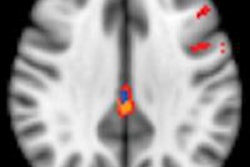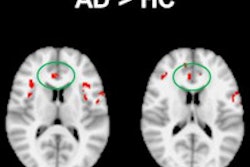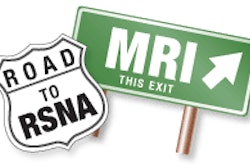In addition, the diagnostic performance of 3D ASL on a 1.5-tesla MRI system is "almost equivalent" to SPECT for Alzheimer's disease, according to the group, and perfusion imaging with 3D ASL is more influenced by hemodynamic factors, such as arterial blood volume, than SPECT, they concluded.
The study included 25 patients with clinically suspected Alzheimer's who underwent perfusion imaging with both 3D ASL on a 1.5-tesla clinical MRI system and technetium-99m hexamethylpropylene amine oxime (HMPAO) SPECT. Sixteen patients were diagnosed with Alzheimer's, and nine patients were found to have no indications of Alzheimer's.
Area under the receiver operator characteristics (ROC) curve analysis was used to compare the diagnostic performance of both modalities. Results showed that the area under the ROC curve distinguishing Alzheimer's from non-Alzheimer's was 0.78 for SPECT images alone, compared with 0.70 for 3D ASL images alone.
Of special note is that the results were achieved using a 1.5-tesla magnet, rather than a 3-tesla MRI system.
"Higher signal-to-noise ratio efficiency of perfusion MR images are usually acquired at 3 tesla rather than at 1.5 tesla," noted lead study author Dr. Hiroto Takahashi from the department of radiology. "But the 3D ASL method is expected to have higher signal-to-noise ratio efficiency than conventional ASL methods. So I achieved our results using the widely used 1.5-tesla clinical MR scanner."
Takahashi and colleagues plan to continue their research in this area. "ASL can be performed completely noninvasive and is repeatable," he added.



















